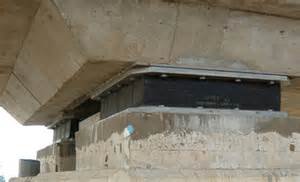Steel bridges are subject to various environmental factors and loads that cause them to expand and contract. To manage these movements and maintain structural integrity, the selection of appropriate steel bridge expansion joints is crucial. This article explores three common types of khe co giãn cầu—Modular, Strip Seal, and Finger Joints—comparing their applications, costs, maintenance requirements, lifespan, ease of installation, and suitable movement ranges.
Modular Expansion Joints:

- Modular steel bridge expansion joints are designed for bridges requiring large movement accommodations, typically exceeding 5 inches. These joints are complex and generally more expensive, but they are essential for bridges where significant expansion and contraction occur. Proper installation and support structures are necessary to ensure their long-term performance, with neoprene seals used to maintain continuity and effectiveness.
Strip Seal Bridge Expansion Joints

- Strip seal bridge expansion joints are the go-to choice for bridges with moderate thermal movements, ranging from 1 to 5 inches. These joints offer a balance between cost and functionality, providing a watertight seal that protects the bridge structure. However, precise installation is critical, as improper splicing can compromise the joint’s integrity, and special care must be taken to avoid damage from snowplows on skewed bridges.
Finger Joints

- Finger joints for bridges are suitable for bridges with movements greater than 3 inches and are composed of interlocking steel fingers that provide support while preventing water and debris from damaging the underlying structure. These joints are cost-effective compared to modular joints but require careful alignment during installation to prevent mechanical issues such as jamming or bending.
Comparison of Steel Bridge Expansion Joints
| Type of Joint | Ứng dụng | Trị giá | Movement Range | Yêu cầu bảo trì | Lifespan | Ease of Installation |
| Modular | Large movement bridges | Cao | Over 5 inches | Cao | 20-30 năm | Complex |
| Strip Seal | Moderate thermal movement bridges | Vừa phải | 1 to 5 inches | Vừa phải | 15-20 years | Vừa phải |
| Finger Joint | Bridges with large openings | Moderate to Low | Over 3 inches | Thấp | 25-30 years | Relatively Simple |
Importance of Proper Installation and Maintenance for Bridge Expansion Joints
Proper installation and regular maintenance of khe co giãn cầu are key to their longevity and functionality. Failing to install these joints correctly can lead to premature failure and costly repairs. Routine inspections should be conducted to catch potential issues early, ensuring that the joints continue to protect the bridge structure effectively.
Phần kết luận

Selecting the right steel bridge expansion joint is vital for the structural integrity and longevity of your bridge. Modular, Strip Seal, and Finger Joints each have their strengths and are suited to different movement ranges, costs, and maintenance requirements. By carefully considering these factors, along with ensuring proper installation and maintenance, you can significantly enhance the durability and safety of your bridge, making it a reliable structure for the future.
Câu hỏi thường gặp
What is a steel bridge expansion joint? A steel bridge expansion joint is a critical component designed to accommodate the expansion and contraction of a bridge structure caused by temperature changes and other environmental factors.
When should I use a modular expansion joint? Modular expansion joints are ideal for bridges that experience large movements, typically exceeding 5 inches. They are complex and costly but essential for managing significant expansion and contraction.
What are the benefits of strip seal bridge expansion joints? Strip seal bridge expansion joints are suited for moderate thermal movements (1 to 5 inches) and offer a watertight seal, protecting the bridge structure while balancing cost and functionality.
How do finger joints differ from other expansion joints? Finger joints are designed for large movements (over 3 inches) and consist of interlocking steel fingers. They are cost-effective and provide support while preventing water and debris damage but require careful installation to avoid mechanical issues.



